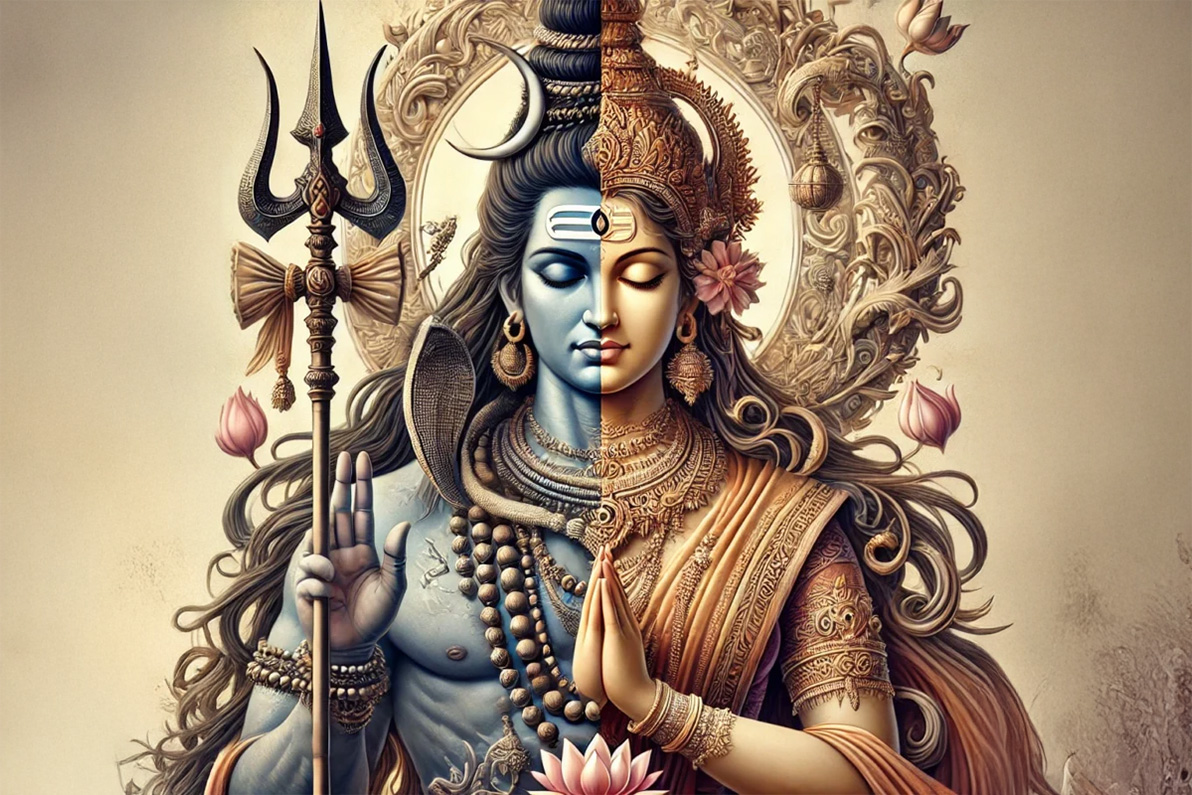The Legend of Shiva and Shakti: The Origin of Ardhanarishvara

Far away, in the heart of a blooming forest, there dwelled Shakti, the embodiment of feminine energy, nurturing and powerful. She was Parvati, the daughter of the mountains, born of the earth’s essence. Shakti was the life force, the spark of creation, the balancing power to Shiva's calm stillness.
The Divine Union
The sages and gods often wondered about the balance of the universe. They realized that creation itself depended on the perfect harmony of Shiva and Shakti, of masculine and feminine energies. While Shiva was the transcendent force that dissolved all illusions, Shakti was the immanent energy that gave life and form to the universe.
One day, as Shiva meditated, Shakti approached him. She spoke gently yet firmly:
“My Lord, the world sees us as separate forces, but we are one. Together, we create, sustain, and transform existence. Should we not reveal our true nature to the universe?”
Shiva opened his eyes, his tranquil gaze meeting Shakti’s fiery brilliance. He smiled, acknowledging the truth in her words. “You are right, Devi. Together, we are completeness. Without you, I am shava (a lifeless body); with you, I am Shiva, the eternal consciousness.”
In that moment, Shiva and Shakti merged their forms into one, becoming Ardhanarishvara—half Shiva, half Shakti, the perfect union of masculine and feminine energies.
The Form of Ardhanarishvara
Ardhanarishvara was a form of unparalleled beauty and power. The left half of the body was Shakti’s, adorned with delicate ornaments, flowing tresses, and the grace of the divine feminine. The right half was Shiva’s, muscular and austere, holding the trident and radiating the strength of the cosmic masculine. Together, they symbolized the unity of opposites: creation and destruction, action and stillness, light and dark.
The form conveyed a profound truth: that the universe exists in balance, and neither energy can function without the other. It was a reminder that all beings, regardless of gender or form, carried within them both Shiva and Shakti.
The Teachings of Ardhanarishvara
When the gods and sages beheld Ardhanarishvara, they were awestruck. “What does this form signify, O Lord and Lady?” they asked.
Shiva spoke, his voice resonating with calm authority:
“Ardhanarishvara shows that creation is a dance of dualities. Life exists in the harmony of opposites—day and night, sun and moon, birth and death, man and woman. To find peace, one must embrace both energies within and transcend the illusion of separation.”
Shakti added, her voice as soothing as a river:
“Ardhanarishvara also teaches equality. Neither energy is superior, for both are essential. Just as the body and soul work together, so must we balance our inner Shiva and Shakti to achieve wholeness.”
The Legacy of Ardhanarishvara
The story of Ardhanarishvara spread across the lands, inspiring countless devotees. Artists sculpted this divine form in stone, poets sang of the union of Shiva and Shakti, and sages taught its deeper spiritual meanings.
Temples dedicated to Ardhanarishvara sprang up, particularly in Tamil Nadu, where the divine form was revered as a symbol of balance and unity. Devotees prayed not only for external harmony but also for inner balance, seeking to integrate their dual energies and realize their higher selves.
To this day, Ardhanarishvara stands as a profound representation of the ultimate truth—that all opposites are merely facets of the same cosmic whole. In recognizing this, humanity can transcend divisions and embrace the divine completeness within.
Thus, the story of Shiva and Shakti, united as Ardhanarishvara, continues to guide the world, illuminating the path to harmony and enlightenment.













